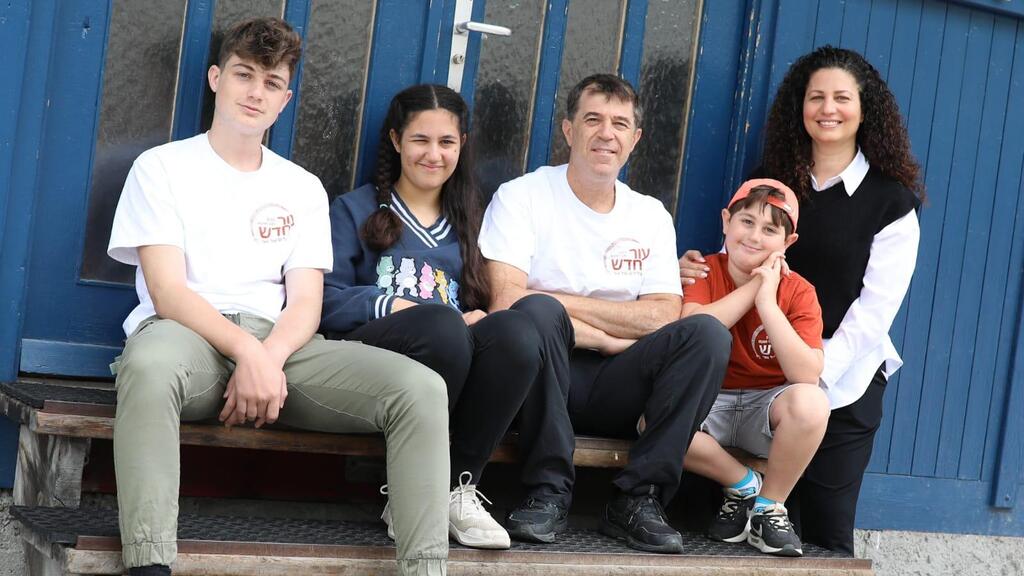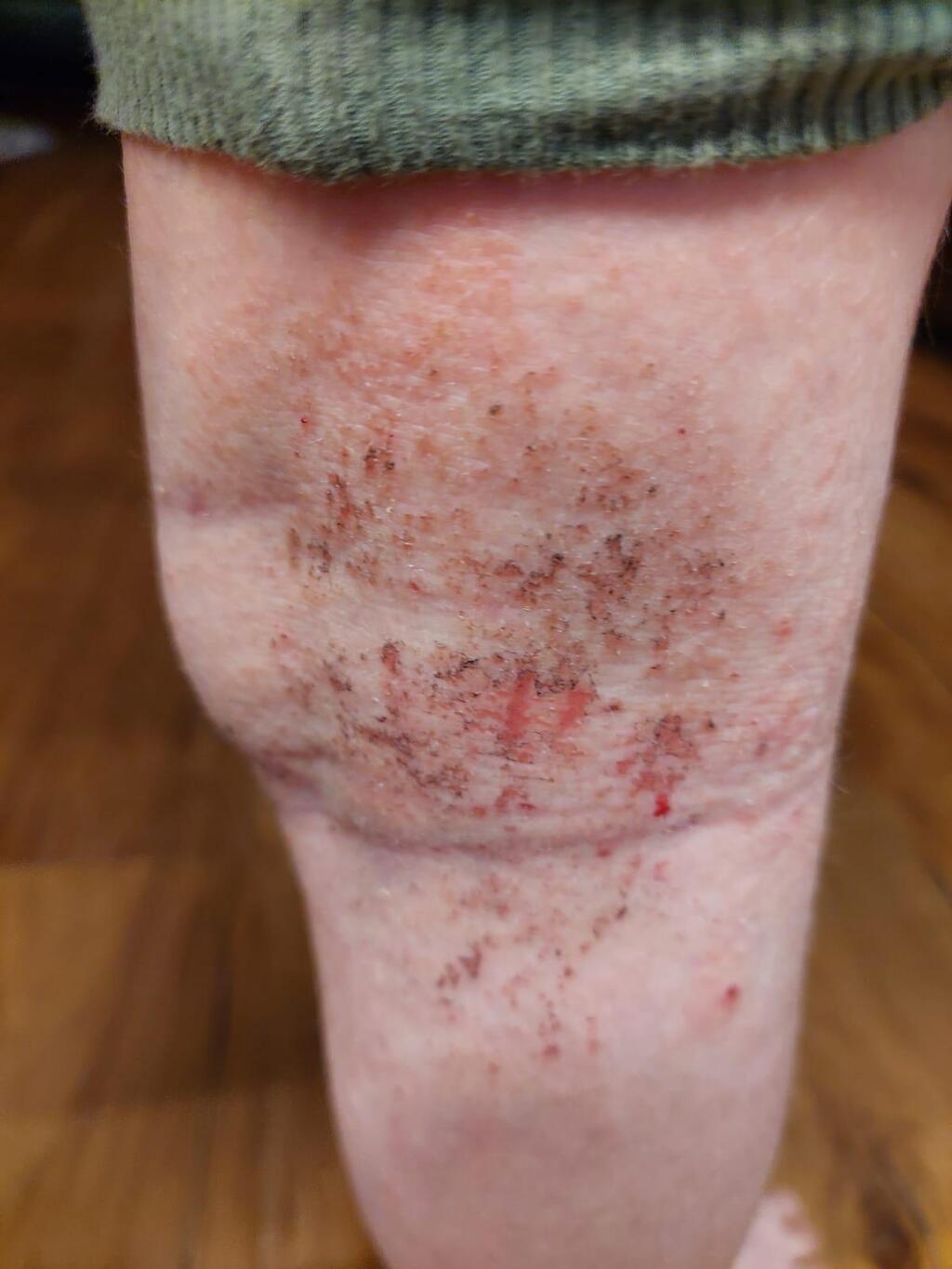Allow me to introduce myself. I'm Meital, a mother of three children named Tom, Romi, and Yaheli. During their childhood, all three of them experienced skin asthma, known as "Atopic Dermatitis." The treatment for my older children was relatively straightforward as they underwent a short period of steroid medication, which greatly improved their condition. Over time, the disease completely vanished, just as it had appeared. However, the situation is entirely different for my youngest son, Yaheli, who is currently 9 years old.
Read more:
As someone with experience in dealing with atopic dermatitis, it became evident to me when Yaheli was just three months old that he was afflicted by this condition. After breastfeeding, he developed sores on his neck and face, which quickly became bothersome and caused intense itching. Seeking medical advice, we consulted various doctors who prescribed ointments and steroids and assured us that the condition would improve over time. However, as time passed, the situation worsened. Yaheli's wounds failed to heal, his eyelids became infected, and he needed antibiotics. Eventually, the wounds became severely infected, necessitating an urgent hospital visit as his life was at risk.
After a few days, we were finally discharged from the hospital, but it became apparent that we couldn't carry on in this manner. Yaheli was two and a half years old, and for the entirety of those years, sleep had eluded us. Throughout the night, our child would incessantly scratch, cry, and scream. The intense itching would cause him to harm himself, resulting in bleeding. It was truly a distressing situation that words fail to adequately convey. As parents, we had to wake up during the night and comfort him by holding him in our arms, hoping to bring him some relief.
We witnessed our child's suffering, feeling helpless as we struggled to find a way to alleviate his pain. We made every effort to ease his discomfort, but unfortunately, our attempts proved futile. In fact, the situation continued to deteriorate. There were instances when I was driving on the highway, and suddenly Yaheli would experience an intense itching episode. I would be compelled to take one hand off the steering wheel to scratch him, as failure to do so would risk him injuring himself. At times, Yaheli's brothers would lend a hand by holding his hands to prevent him from causing damage to himself.
During a family trip to the beach, just ten seconds after Yaheli entered the water, he started screaming in agony, claiming that his entire body was burning. We had no choice but to immediately shower him and head back home. Since then, we have refrained from visiting the sea altogether. When our child suffers, the entire family feels the impact. For instance, we had to modify our daily routines, avoiding outdoor activities after 11 in the morning due to the heat. As temperatures rose, Yaheli would sweat, experience intense itching, and endure significant discomfort. Additionally, even as he grew older, he was unable to participate in classes or activities like his peers. Coaches and instructors deemed it pointless for him to continue, as he would constantly be preoccupied with scratching.
"I want you to finally experience a good night's sleep"
During Yaheli's treatment at the age of two and a half, we had the opportunity to meet Professor Shoshana Greenberger, a Pediatric Dermatologist at Sheba Medical Center. She took a personal interest in our case and made a commitment to be available around the clock, doing everything within her capacity to bring about a positive change. The very first words she spoke to us were: "I want you to finally experience a good night's sleep."
Based on Prof. Greenberger's recommendation, we participated in a trip organized by the Israeli Association for Atopic Dermatitis to Davos, Switzerland. Davos is known as one of the highest cities in Europe and is characterized by favorable weather conditions and low humidity. During our time there, Yaheli's condition showed signs of improvement, which was both surprising and uplifting. While we understood that permanently relocating to Switzerland was not feasible, the thought of reverting to our previous situation after the trip was unbearable. It was during this time that Prof. Greenberger informed us of a new biological drug suitable for children. This treatment could be administered at home through a monthly subcutaneous injection. Initially, Yaheli had some concerns about the injections, but gradually he became more accustomed to them.
A year has passed since we began the treatment, and the progress has been remarkable. The wounds have significantly reduced in size, mainly around the neck and eyes, and the itching has noticeably decreased. Although Yaheli still occasionally wakes up at night, the overall situation has improved significantly.
The medication has truly transformed our lives. Yaheli recently completed a basketball class, and this summer, he actively participated in a swimming class. Given that many parents find themselves in similar circumstances as we did, it is crucial for us to share that there are treatment options available today. In fact, I personally volunteer at the Israeli Association for Atopic Dermatitis, where I work to raise awareness about the condition and provide assistance to other families.
Prof. Greenberger explains, "Atopic dermatitis is a prevalent condition among children, affecting as many as 20% of children in Western countries. The severity of the disease can vary, with severe cases significantly impacting both the child's and their family's quality of life. In these instances, children experience a persistent rash and intense itching, often leading to scratching that results in bleeding and disrupted sleep. Parents frequently endure sleepless nights and struggle with daily functioning. Moreover, the visible rash can lead to social challenges for children, as some of their peers may unjustly fear contracting the condition and distance themselves."
According to Prof. Greenberger, the treatments available today are tailored to the severity of the disease. "For mild cases, it is common to use ointments, with or without steroids. In more severe cases, immunosuppressive drugs and phototherapy, which utilizes UV radiation, are typically administered. If there is no improvement, biological drugs included in the health insurance coverage are usually prescribed. These drugs are composed of a human antibody created from protein and manufactured in a laboratory setting. When injected, the protein binds to a specific component of the disease mechanism, thereby suppressing it and resulting in substantial improvement."
Shulamit Burstein, CEO of the Israeli Association for Atopic Dermatitis, emphasizes the association's collaboration with the healthcare system to advance disease treatment. "Our efforts involve advocating for the inclusion of new medications in the healthcare coverage, raising awareness about the condition, enhancing treatment protocols, and ensuring individuals affected by atopic dermatitis have access to their rightful benefits."



